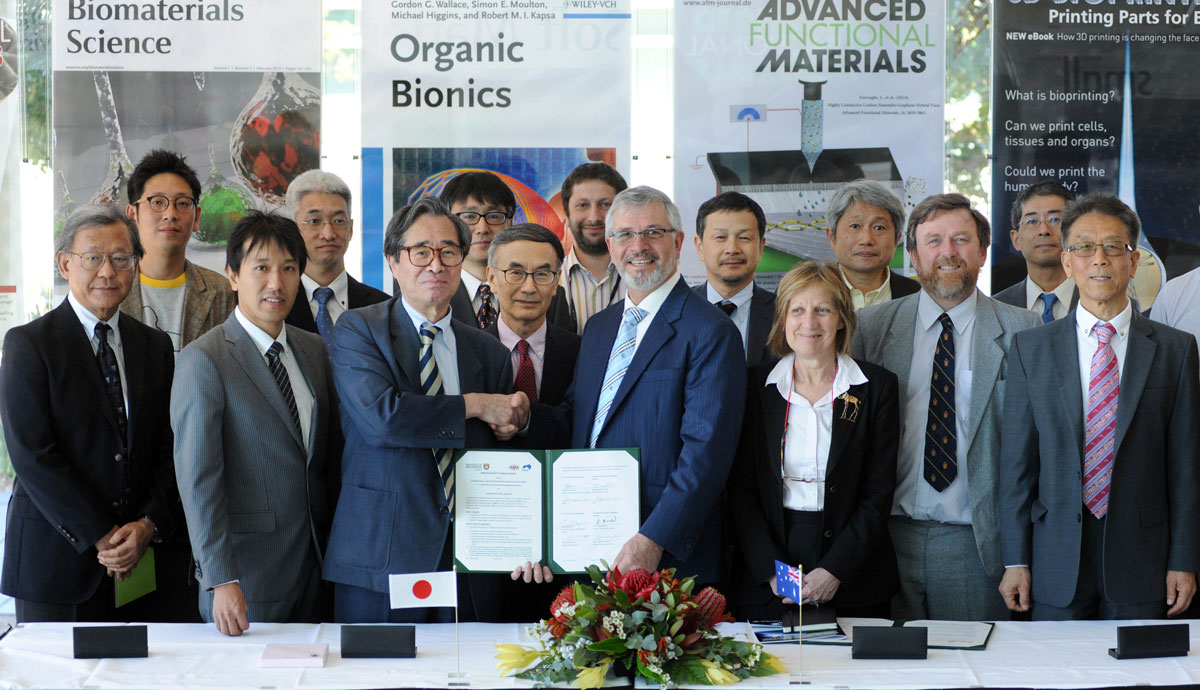September 30, 2015
МмГАґ«ГЅapp signs on with prestigious Japanese research group
A two-decade-long partnership between researchers at МмГАґ«ГЅapp and a prestigious Japanese institute is furthering materials for sustainable energy and development.
МмГАґ«ГЅapp’s (ISEM) and the (NIMS) this week (September 29) formalised their existing partnership through the signing of a Memorandum of Understanding (MoU).
МмГАґ«ГЅapp is the only University in New South Wales to link with the high-performing, prestigious Japanese institute.
The research collaboration between ISEM and NIMS was established more than 20 years ago. To date, the partnership has yielded seven joint research projects worth close to $3 million, staff and student exchanges, and 105 joint publications with more than 1400 citations.
NIMS employs more than 1500 staff working in materials science including fields that cover a wide range of applications, including electronics, optics, coatings, fuel cells, catalysts and biotechnology.
The partnership is a natural fit, with ISEM being a world-leader in new materials for energy storage technologies, ranking among the leading research groups globally in lithium-ion battery research and with strong global research and industry linkages.
Under the
Collaboration with one of the major divisions within NIMS, namely the International Centre for Materials Nanoarchitectonics (MANA), will focus on pioneering functional materials with a vast array of applications that range from energy storage to medical services.
A key plank in the partnership is ISEM’s ability to add its expertise in battery technology being developed at NIMS.
Following the 2011 earthquake and tsunami in Japan and subsequent nuclear power plant accident, NIMS has been part of a radical review of energy supply.
That has led to the focus on developing high performing rechargeable batteries, fuel cells and similar technologies that harness natural energy sources such as solar power and wind power for small-scale power networks to replace large-scale power generation.
ISEM Director Professor Shi Xue Dou said: “NIMS has many collaborative partners worldwide but few could match the magnitude and extent of МмГАґ«ГЅapp and NIMS.
“The current ongoing collaboration is even stronger. I hope we can formally establish a joint centre to further enhance the collaboration and building on our reputation in energy research.”
МмГАґ«ГЅapp Deputy Vice-Chancellor (Research) Professor Judy Raper said the University was seeking to increase international collaborations with high performing groups and NIMS was an exceptionally high-performing group in materials research.
“Collaborations so far have resulted in many outstanding research outcomes including joint grants, publications and supervisions and there have been numerous staff and student exchanges between the groups.
“We are the only university in NSW that has signed an individual agreement with NIMS and having this collaboration increases our international visibility.”
